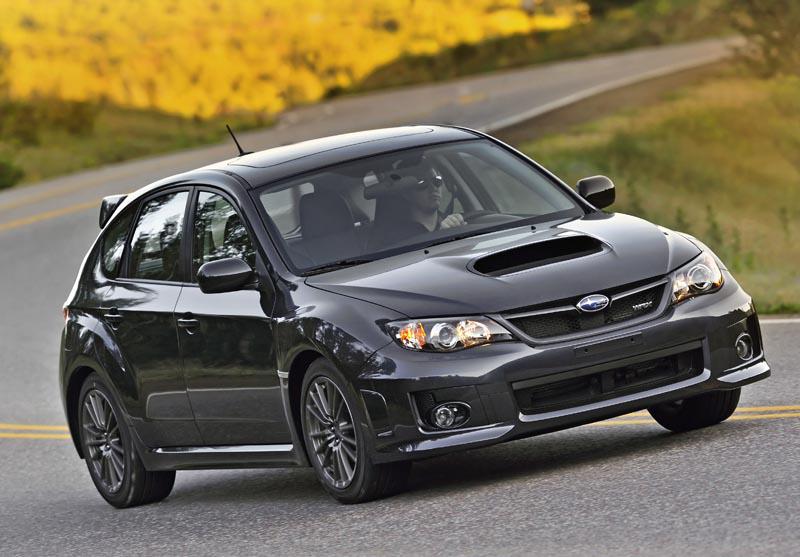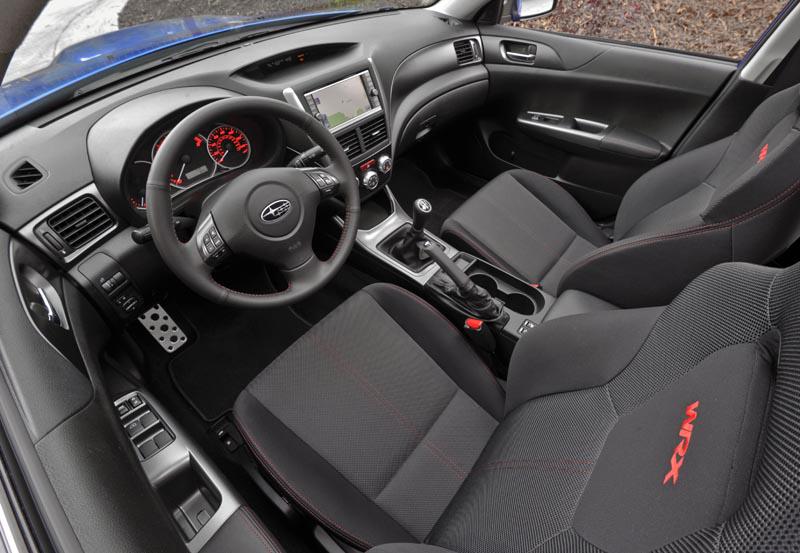Better than: 2010 Impreza WRX
But not as good as: 2011 Impreza WRX STI
GRM Bang For The Buck Index: 97.30
Don't worry, we haven't forgotten about the Mazda 323, Diamond Star triplets and various Audi quattros, but the Subaru Impreza WRX helped blaze a trail a decade ago. The WRX paved the way for the all-wheel-drive, rally-bred machines that would dominate the first tenth of this century. Without that first U.S.-spec WRX, would there have been an STI or Lancer Evo?
The first incarnation of the U.S.-spec WRX lasted through the 2007 model year, with tweaks appearing along the way: two facelifts plus an eventual displacement bump from 2.0 to 2.5 liters.
While the higher-output Impreza WRX STI grabbed much of the limelight, the standard-issue WRX attracted legions of fans--especially fans of wagons, as the STI wasn't originally available here in such a configuration.
The Impreza WRX received a major redo for 2008, and with the stiffer body and new rear suspension came a couple of complaints: The car had become soft and lost its edge, some said.
Those cries didn't fall on deaf ears, as Subaru has performed a pretty substantial mid-cycle facelift for 2011.
First, there are the hard-to-miss body changes. All WRX models--both the four-door sedan and five-door wagon--receive the bulging fenders found on the WRX STI. Along with the fenders comes a wider track--about an extra inch and a half between the right and left tires. This will help improve stability and limit body roll.
Those wider fenders also mean wider wheels. Last year's 17x7-inch wheels have been replaced by 17x8-inch units. Tire size has also grown, going from 225/45R17 to 235/45R17.
Despite the wider footprint, there's less rotating mass. The new wheels weigh 1.5 pounds less than the old ones. Once the tire weight is factored in, each corner still weighs 0.4 pounds less than before. The overall weight penalty between the 2010 and 2011 car is minor--according to Subaru, just 34 pounds.
Other than the wider track, there are a few other changes for 2011: stiffer rear suspension bushings, new gauges, a revised audio system, and a bit more black than silver in the interior. The WRX is still powered by the 265-horsepower, 2.5-liter turbo boxer. A five-speed manual transmission is the only available gearbox.
Some dimensions for those keeping score at home.
- 2010 overall width: 68.5 in.
- 2011 overall width: 70.7 in.
- 2010 front track: 58.9 in.
- 2011 front track: 60.2 in.
- 2010 rear track: 59.1 in.
- 2011 rear track: 60.6 in.
- 2010 wheelbase: 103.1 in.
- 2011 wheelbase: 103.3 in.
- 2010 sedan curb weight: 3174 lbs.
- 2011 sedan curb weight: 3208 lbs.
- 2010 wagon curb weight: 3174 lbs.
- 2011 wagon curb weight: 3208 lbs.
In addition to the two body styles--four-door sedan and five-door wagon--the WRX is also available with a few different trim levels. The Premium version adds an all-weather package (heated front seats, heated mirrors and a windshield wiper de-icer) plus fog lights, a power tilt/slide moonroof and a trunk spoiler for the sedan. The WRX Limited adds HID low-beam headlights, leather-trimmed upholstery and a power moonroof.
Here are the new prices:
Four-door
- WRX Base: $25,495
- WRX Premium: $27,995
- WRX Limited: $28,995
Five-door
- WRX Base: $25,495
- WRX Premium: $27,995
- WRX Limited: $28,995
Other staff views
David S. Wallens
Editorial Director
You know, this might be all the WRX that most of us need, especially once the price differences are considered. The basic WRX costs $8500 less than the basic STI sedan.
I can do a lot with $8500, from make a bunch of mortgage payments to buy a ton of hop-up parts. I could also build a sweet rallycross car or an awesome halfpipe with that amount.
True, the WRX doesn't get the STI's trick center differential and extra driver controls, but on the road the basic impressions are really close: good torque matched with good grip. Ask yourself what you're going to do with this car: enter the X Games or commute to the office?
To the average person, the cars now look nearly the same, too. I know that we're not supposed to be slaves to fashion, but the 2008-'10 WRX wasn't the most aggressive-looking car out there. The new fenders erase that problem. I also like the new blacked-out interior. It looks less like a Camry and more like a car that I'd buy.
I also like a car that delivers more yet doesn't ask for anything else in return. The new wheels are wider yet lighter? Cool, thanks, Subaru. Okay, there's a $500 price bump in MSRP, but that seems reasonable.
What's it like to drive? The 2011 car has that familiar WRX feel. It handles a bit better than before yet doesn't ride any worse. The interior also feels half a notch nicer. The seats feel nice. The driver is surrounded by a ton of glass. I could drive this car all day. It actually has a bit of an exhaust note, a nice burble when trucking along.
My biggest personal dilemma: sedan or wagon?
So, why did we say that the new WRX isn't as good as the new STI? If you have the bread, sure, it's hard to turn down more power and more control. For most of us, though, the WRX no longer feels like a second-place machine.
Comments
View all comments on the GRM forums
You'll need to log in to post.






























